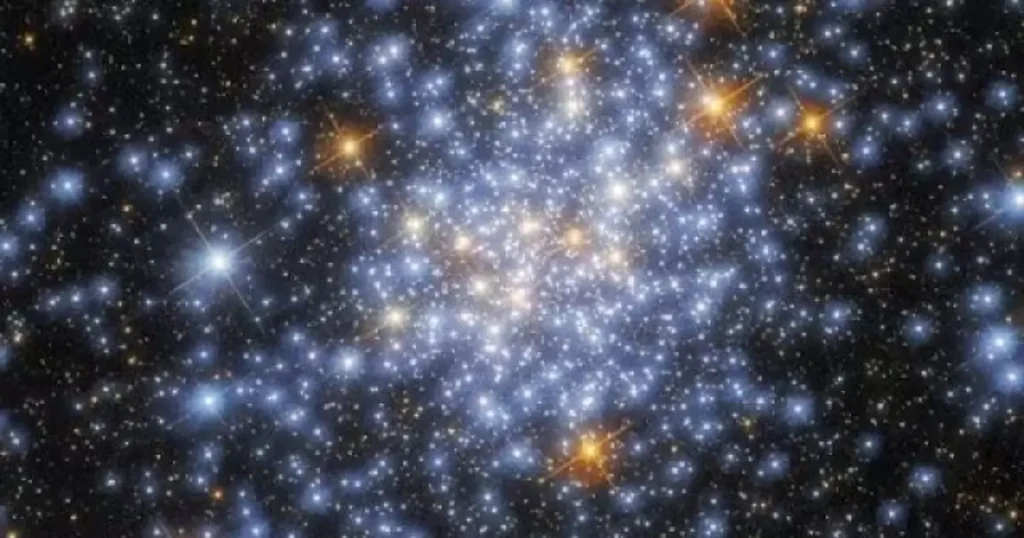Stars, the brilliant celestial bodies that illuminate our night sky, have fascinated humanity for millennia. When we refer to groups of these luminous objects, we use specific collective nouns that capture their beauty and grandeur.
In this article, we will explore the concept of collective nouns and delve into some intriguing examples specifically related to stars.
What Are Collective Nouns?
Collective nouns are words used to describe a group of individuals or things considered as a single entity. These nouns simplify our language and provide a more vivid and interesting way to refer to collections of objects, animals, or people.
For example, instead of saying “a group of birds,” we can say “a flock of birds,” which is more expressive and efficient.
Best Collective Nouns for Stars
- A constellation of stars
- A galaxy of stars
- A cluster of stars
- A nebula of stars
- A swarm of stars
- A blanket of stars
- A scattering of stars
- A sparkle of stars
- A brilliance of stars
- A multitude of stars
Let’s explore each of these collective nouns in more detail.
A Constellation of Stars
Explanation
A “constellation of stars” refers to a recognized pattern of stars, often named and cataloged for navigational and astronomical purposes.
Scenario
As she lay on the grass, she traced the outline of Orion, a constellation of stars that has guided sailors for centuries.

A Galaxy of Stars
Explanation
A “galaxy of stars” describes an immense system of stars, gas, dust, and dark matter bound together by gravity.
Scenario
Through the powerful telescope, they marveled at the Milky Way, a galaxy of stars stretching across the sky.
A Cluster of Stars
Explanation
A “cluster of stars” denotes a group of stars that are gravitationally bound and often appear close together in the sky.
Scenario
The astronomer pointed out the Pleiades, a beautiful cluster of stars visible to the naked eye.
A Nebula of Stars
Explanation
A “nebula of stars” refers to a region of space filled with gas and dust, where new stars are often born.
Scenario
In the photograph, the vibrant colors of the Eagle Nebula revealed a nebula of stars in various stages of formation.
A Swarm of Stars
Explanation
A “swarm of stars” describes a large, dense group of stars moving together, often seen in globular clusters.
Scenario
The Hubble Space Telescope captured a swarm of stars orbiting the core of a distant galaxy.
Other Ways to Say “Does That Make Sense”
A Blanket of Stars
Explanation
A “blanket of stars” evokes the image of a vast expanse of stars covering the night sky.
Scenario
Camping in the desert, they lay under a blanket of stars, feeling the vastness of the universe around them.
A Scattering of Stars
Explanation
A “scattering of stars” refers to stars that appear spread out across the sky in no particular pattern.
Scenario
On the rural farm, away from city lights, they enjoyed the serene view of a scattering of stars overhead.

A Sparkle of Stars
Explanation
A “sparkle of stars” highlights the twinkling effect of stars as seen from Earth.
Scenario
The child gazed up in wonder at the sparkle of stars twinkling like diamonds in the night sky.
A Brilliance of Stars
Explanation
A “brilliance of stars” emphasizes the intense brightness and beauty of a group of stars.
Scenario
Through the clear mountain air, they witnessed a brilliance of stars that took their breath away.
A Multitude of Stars
Explanation
A “multitude of stars” refers to an incredibly large number of stars visible in the sky.
Scenario
The astronomer spoke of the multitude of stars in the observable universe, each one a potential sun for other worlds.
Interesting Facts About Stars
Stars are not only beautiful but also incredibly fascinating objects. They are born from massive clouds of gas and dust, known as nebulae, through a process called nuclear fusion.
Stars vary in size, temperature, and color, and they have a lifecycle that includes stages such as main sequence, giant, and supernova. The closest star to Earth, the Sun, is essential for life, providing light and warmth to our planet.
Final Thoughts
Collective nouns enrich our language by providing precise and often vivid ways to describe groups of objects. The collective nouns for stars not only make our descriptions more interesting but also help us visualize and understand the context better.
Whether it’s a “constellation of stars” or a “blanket of stars,” each term offers a unique perspective on these celestial wonders.Understanding and using collective nouns can enhance our communication, making it more colorful and precise.
Next time you gaze at the night sky, think about the various ways you can describe the stars and appreciate the richness they bring to our language.



